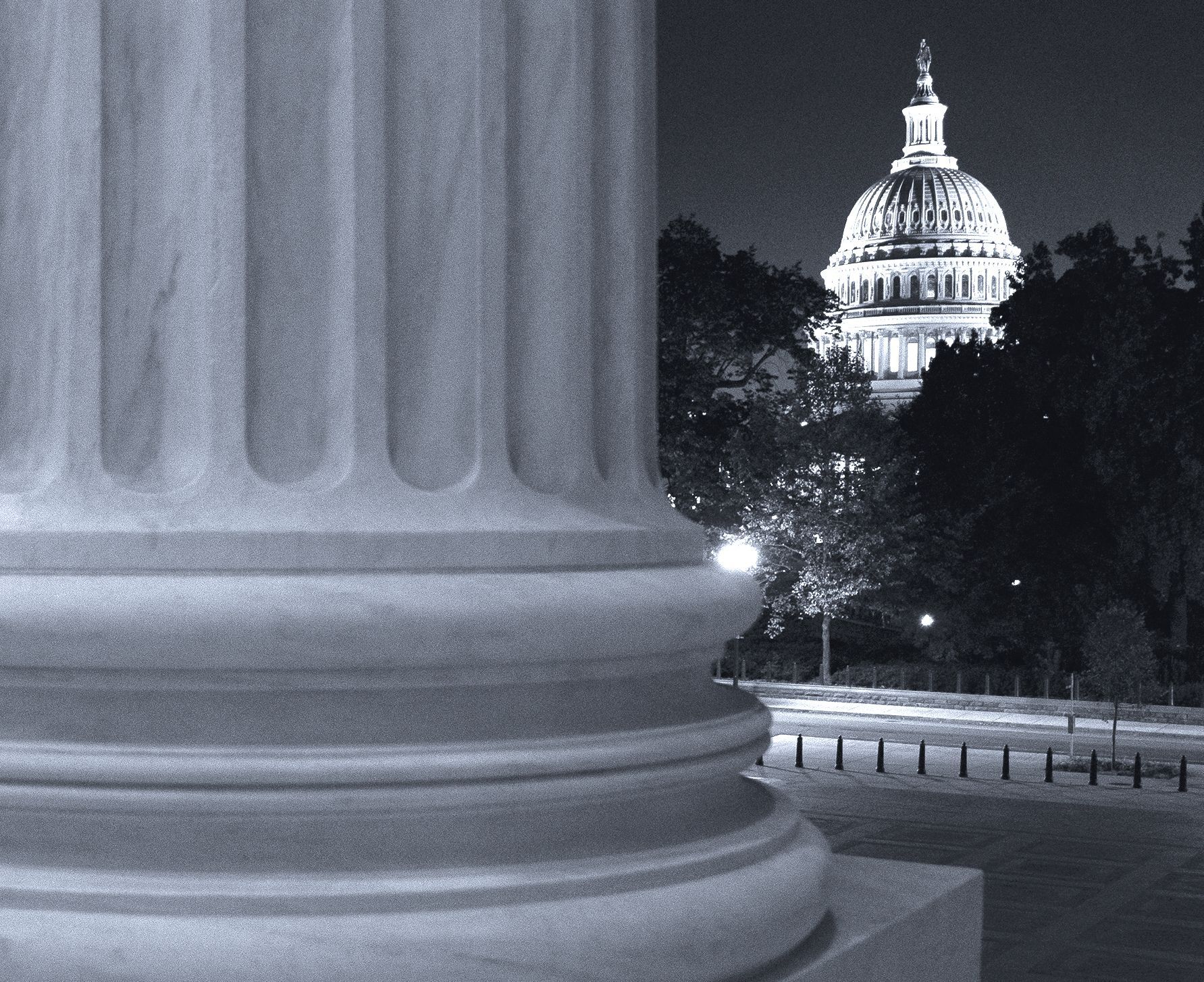
In one of the most highly anticipated moves in recent U.S.-China relations, President Biden issued an Executive Order on August 9, 2023 (the EO), declaring a national emergency and restricting certain types of outbound investments into the People's Republic of China (PRC), including Hong Kong and Macau. The EO directs the U.S. Department of Treasury (Treasury) to work with the U.S. Department of Commerce (Commerce) and other agencies in establishing a program to prohibit certain investments in China and to require that in other circumstances, U.S. persons notify Treasury of their investments in these industries. The EO further directs Treasury to focus its attention on specific technology sectors within the semiconductors and microelectronics, artificial intelligence, and quantum computer technologies industries.
This new program is not in place yet, and the regulations likely will not be effective for at least several months. In tandem with the EO, Treasury issued an Advance Notice of Proposed Rulemaking (ANPRM) to seek additional stakeholder input on key aspects of the program’s implementation, such as baseline definitions, notification requirements, and penalty processes. Interested parties have until September 28, 2023, to submit written comments. The ANPRM will be followed by the proposed regulations implementing the outbound investment screening program, which also are expected to be subject to a period of notice and comment before becoming effective. Once the regulations are implemented, the EO provides that Treasury re-evaluate the program, in consultation with Commerce and other agencies, after an initial period of no longer than one year. After that re-evaluation period, the set of covered countries or technologies covered may expand.
Under the new program, Treasury will screen certain equity investments, debt financing, greenfield, and joint venture transactions by U.S. persons into sectors it views as the cutting-edge technologies of the future, particularly those critical for military, intelligence, surveillance, and cyber-enabled capabilities of the PRC. Though the military applications of quantum computing are not yet clear, the U.S. already has seen significant development in the defense applications of semiconductors, and this move follows the Biden administration’s imposition of large-scale restrictions on the sale of semiconductor technology to China last October, especially where such semiconductors are useful in supporting large-scale artificial intelligence applications. The Biden administration is looking to limit the PRC’s innovation in these areas using American resources, citing the potential utility of these technologies in geostrategic competition.
Our key Q&As for the proposed outbound investment screening program:
1. Which sectors are regulated under the initial version of the new outbound investment regime?
In the months leading up to this announcement, U.S. officials have cast this regulation as a targeted move necessary to protect U.S. national security and prevent access by China’s military to cutting-edge technologies, and many officials have expressed hesitancy to impose overly broad prohibitions on investing in the PRC economy. As a result, the EO has been described by the Biden administration as “narrowly tailored” to three specific sectors, termed “covered national security technologies and products.”
- Semiconductors and microelectronics
- Quantum information technologies
- Artificial intelligence (AI)
The outbound investment program outlined in the ANPRM does not treat these sectors equally. It fully prohibits transactions related to PRC companies working on identified quantum information technology and products. By contrast, only some transactions related to identified semiconductors/microelectronics and AI systems in sensitive areas are barred, while a broader array of investments in PRC companies building products in those sectors must be notified to Treasury, but only after each investment is made. The ANPRM explains that these three industries “underpin military innovations that improve the speed and accuracy of military decision-making, planning, and logistics; enable the compromise of encryption and other cybersecurity controls; and advance mass surveillance capabilities,” and U.S. persons should not be subsidizing the People’s Liberation Army in these areas.
The ANPRM also suggests that Treasury will attempt to precisely define the parameters of the “covered national security technologies and products.” In proposed definitions, having been provided for public comment, Treasury has offered technical specifications for the semiconductor/microelectronics and quantum categories, and usage parameters for the potentially sprawling AI category. For example, in the latter case, Treasury has suggested an extremely broad definition of “AI system” that incorporates any “engineered or machine-based systems that can, for a given set of objectives, generate outputs” (within certain limitations) – a definition that might encompass many varieties of software of all stripes. However, the ANPRM suggests that the prohibition with respect to AI may be limited to systems “exclusively used” for “military, government intelligence, or mass-surveillance end uses,” and a notification requirement similarly limited to systems “exclusively used” for cybersecurity, digital forensics, surreptitious listening, and a limited number of other purposes. These purpose-based limitations purport to limit the scope of the restricted set of technologies, though these purpose-based limitations also may make it difficult to identify covered technologies by features alone. In addition, Treasury notes in the ANPRM that it is considering substituting “primarily used” in place of “exclusively used,” which would create much more ambiguity.
As these points make clear, the impact of this outbound screening program rests upon the specific definitions to be provided and how Treasury chooses to interpret them. The establishment of this outbound investment program harkens back to the beginning of the Committee on Foreign Investment in the United States (CFIUS), the origins of which date to an order issued by President Ford in 1975. CFIUS authorities have subsequently expanded through a series of changes made at semi-regular intervals over the course of the last several decades. As the re-evaluation requirement in the EO makes clear, the administration intends to reconsider the scope of this outbound regime in the near term. Even if narrow application is intended now, CFIUS’ expansion suggests that a narrow approach might not be maintained.
2. What types of investees does the new program target?
The EO imposes prohibitions and/or notification requirements regarding (i) the acquisition of equity interests (including M&A, private equity, venture capital, and other similar arrangements), (ii) the establishment of greenfield investments or joint ventures, and (iii) the offering of debt financings including equity conversions–in all cases, with respect to certain investments related to specified technologies involving companies organized in or backed by investors in “countries of concern.”
At this moment, the term “countries of concern” is defined in the Annex in reference to one singular entity: the PRC (and its special administrative regions of Hong Kong and Macau). However, the EO contemplates the potential addition of other countries or regions.
The EO currently targets enterprises organized under the laws of, having a principal place of business in, or majority-owned by persons of a country of concern–irrespective of the geographic location of such entity. The ANPRM further emphasizes this majority ownership point in its proposed definitions for a “person of a country of concern.” If this definition remains in the ultimate regulations, it would provide a comparatively clear approach to determining which targets would be deemed subject to the prohibitions and/or notification requirements (versus the notoriously open-ended CFIUS “control” test). A European quantum computing company with a PRC citizen as a board member might be viewed by CFIUS as under Chinese “control,” but Treasury seemingly will not view that European company as covered by the outbound regulations unless it is majority owned by PRC persons.
There is, however, one large caveat to Treasury’s apparent eschewing of the nebulous “control” test: the ANPRM suggests that PRC government “control” (as opposed to PRC person control) might be sufficient to bring the aforementioned European quantum computing company within the scope of the regulations–if the European company’s Chinese board member is an official of the PRC government, or perhaps even a member of the ruling Chinese Communist Party, then all bets are off. This is one of many issues that seemingly will require clarification by Treasury.
Overall, the language in the ANRPM suggests that the Biden Administration is hoping to follow through on its expressed intention to make the outbound investment program narrowly tailored in its initial phases, but Treasury has acknowledged that there is much work to be done to achieve that result.
3. Whose activities will be restricted by the new outbound investment program?
The new outbound investment program appears set to begin applying only to “U.S. persons,” which includes U.S. citizens, U.S. lawful permanent residents (a.k.a. “green card” holders), entities organized under the laws of the U.S. or a subnational government within the U.S., foreign branches of U.S. entities, and all persons physically within the United States. Importantly, the ANPRM suggests that U.S. limited partners in foreign funds managed by non-U.S. persons generally will not be covered as long as the limited partners are passive and do not hold an economic stake above a to-be-determined threshold. The scope of this LP exception in the final rules – and those of a number of other, similar exceptions set forth under the proposed definitions in the ANPRM – will play a significant role in determining how these requirements may “flow down” from U.S. investors to funds based outside the U.S.
The Treasury Secretary is also authorized under the EO to impose controls on U.S. persons’ interactions with foreign entities that those U.S. persons control, and with respect to transactions “knowingly” directed by non-U.S. persons. In this way, the EO contains many parallels to the U.S. person support and services prohibitions announced by Commerce in last October’s rule announcing new export controls on advanced semiconductors and supercomputers. However, the global nature of many investors and the extreme fungibility of capital in comparison to technical knowledge will make tracking this a tougher challenge for Treasury. It remains to be seen whether or how the Biden Administration’s new rules will prevent foreign-headquartered firms with U.S. investment arms from simply repatriating funds away from their U.S. entities and U.S. person managers to avoid the new restrictions. The ANPRM discusses how such activities might be considered violations, but it does little to explain how Treasury will draw lines between activity designed to skirt the boundaries of the rules and normal outbound investment activity.
In addition, it remains to be seen whether geopolitical allies of the U.S. will also roll out similar restrictions on their entities engaged in outbound investments, which would strengthen Treasury’s hand in enforcing these restrictions. Though the Biden Administration highlighted its work coordinating closely with G7 partners and other allies in crafting the new outbound investment program, none has yet announced its own outbound controls.
The Wilson Sonsini team is continuing to track developments under the EO, including the drafting of regulations under the ANPRM, very closely. If you have any questions about the outbound foreign investment regulations, please contact Stephen Heifetz, Joshua Gruenspecht, Weiheng Chen, Kara Millard, Bryan Poellot, or another member of Wilson Sonsini’s national security practice or Greater China practice.
- Privacy Policy
- Terms of Use
- Accessibility




